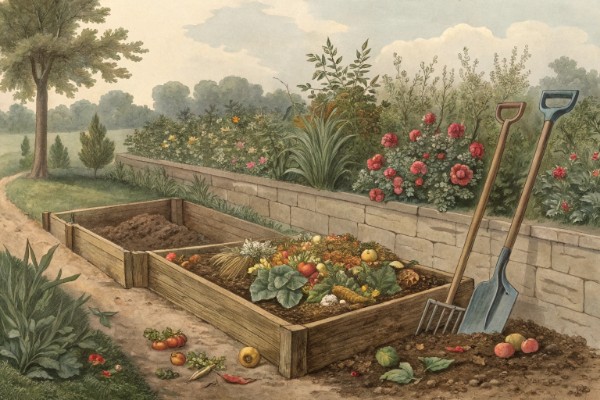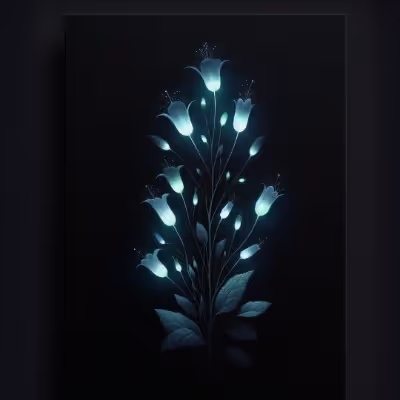Drip Irrigation Tips for a Healthy and Vibrant Garden

Drip Irrigation
Install a drip irrigation system to cut water usage by nearly 50 percent, eliminate weeds, and deliver moisture directly to plant roots. Position your drip irrigation lines early morning to avoid evaporation and prevent fungal diseases. Regularly check your drip irrigation emitters to maintain consistent water flow and keep your garden thriving effortlessly. Read on to discover exactly how drip irrigation transforms gardening into an effortless pleasure.
🌿 Drip Irrigation Cheatsheet: Grow Your Perfect Garden 🌿
🚰 Plan Your Setup
- 📏 Measure garden area accurately (sq. ft. & sq. m.)
- 🗺️ Map out plant types: group by water needs
- 📐 Keep drip lines within 12 in (30 cm) of plant roots
🛠️ Essential Components
- 🚿 Emitters: slow drip (for shrubs) or microspray (for veggies)
- 🔄 Pressure regulator: maintain 25 psi (1.7 bar)
- ⏱️ Timer: set watering schedule for early morning hours
- 💦 Filter: prevent clogging, ensure consistent water flow
🌱 Installation Tips
- 📌 Stake drip lines every 3 ft (90 cm) to secure position
- 🌀 Place emitters uphill from plants on slopes for even watering
- 🔧 Flush lines annually to remove debris and buildup
🥕 Optimal Watering Schedule
- 🍅 Vegetables: 30 mins daily, 0.5-1 gal (2-4 L) per week per plant
- 🌸 Flowers: 20 mins every 2 days, moist but not waterlogged
- 🌳 Shrubs/Trees: 60 mins twice weekly, deeper saturation
🌡️ Seasonal Adjustments
- ☀️ Hot (over 90°F / 32°C): increase watering frequency slightly
- ❄️ Cool (below 60°F / 15°C): reduce frequency, monitor moisture levels
- ⛈️ Rainy periods: pause system until soil dries slightly
⚙️ Maintenance Checklist
- 🔍 Inspect emitters monthly, clear blockages immediately
- 🩹 Patch damaged lines promptly with drip repair kits
- 🍂 Replace filter every season for optimal flow
🌍 Environment & Efficiency
- 💧 Drip irrigation saves up to 60% water compared to sprinklers
- 🌾 Reduce weed growth by targeting only desired plant roots
- 🥬 Boost crop yield & nutrient density with efficient watering
- 🌻 Promote plant health, prevent fungus issues caused by wet foliage
Why Drip Irrigation Earned a Permanent Spot in My Garden
Years spent watering by hand taught me two things: patience is finite, and plants know the difference. Drip irrigation became the solution that saved my sanity and my garden simultaneously.
What drew me initially was precision; what kept me committed was the sheer simplicity. By delivering water directly to roots, drip irrigation conserves moisture, reduces weeds, and lets me lounge longer with my espresso—rather than sprinting around with a watering can.
Picking the Right Gear: Simplifying Drip Irrigation Parts
I started small, buying one of those basic starter kits from my local garden center. The investment paid off almost immediately.
- Emitter tubes: Tiny outlets releasing measured droplets directly where plants need them.
- Tubing connectors: They're the Lego pieces of irrigation—fun and foolproof.
- Pressure regulator: Keeps water flow steady, preventing blowouts—trust me, spraying water chaos isn't fun.
- Timer system: Automates everything according to your schedule, ensuring perfection even when you're lounging on the Amalfi coast.
Designing a Layout that Actually Works
Initially, I made the rookie journey of overly ambitious layouts snaking everywhere. But after pruning my system down, clarity emerged.
"According to the EPA, drip irrigation systems can save homeowners up to 50% of water consumed compared to traditional watering methods."
Mapping Zones and Plant Groupings
Group plants based on hydration needs—thirsty tomatoes and peppers in one section, drought-tolerant lavender in another. This makes customizing drip rates effortless.
Keep Lines Accessible
Place lines an inch or two (2.5–5 cm) under mulch to shield them from sun and curious pests but remain visible enough for easy inspection. Trust me, checking tubes for wear is easier without excavating half your garden.
Installing Drip Irrigation without Breaking a Sweat
Installation intimidated me briefly, yet within an afternoon—with a little music and a cold beverage—it turned surprisingly meditative.
- Lay out tubing: Position main lines near your plants, marking emitter locations clearly.
- Punch holes and insert emitters: A satisfying yet oddly therapeutic task.
- Connect to water source and regulator: Then, test for leaks briefly before fully committing.
Fine-Tuning the Flow: Mastering Watering Schedules
Fine-tuning involves trial, error, and attentive observation—just like cooking pasta al dente. Adjust emitter flow rates and watering frequency according to plant responses and weather patterns.
In hot summer months (above 85°F / 29°C), my vegetable garden thrives with daily drip sessions lasting about 30 minutes. Cooler days mean less frequent watering—perhaps every second or third day.
Maintaining Your Drip Irrigation for Longevity
Like all good relationships, drip irrigation requires occasional TLC:
- Regular checks: Inspect emitters monthly, clearing any mineral buildup (a quick soak in vinegar works wonders).
- Flush the lines: Twice a season, simply open the end caps and let water run through to clear debris.
- Prepare for winter: Drain water from lines to prevent freezing damage—something I learned after one particularly chilly winter morning.
Through drip irrigation, my garden transformed—more vibrant, less stressed, and impressively resilient. No longer overtending to plants, I found more time to actually enjoy my garden—glass of wine in hand, contemplating nature's quiet miracles.
Frequently Asked Questions About Drip Irrigation
How frequently should drip irrigation run in a garden?
The ideal watering frequency depends on plant type, local climate, and soil structure. Most vegetable gardens thrive with a drip irrigation schedule of approximately two to three times per week, supplying around 1 to 1.5 inches (2.5 to 3.8 centimeters) of water per week. Adjust the timing accordingly during hot periods or rainy spells.
How long should each watering session last?
Duration of watering sessions varies based on emitter flow rates and plant requirements. Typically, drip emitters rated at approximately 1 gallon per hour (3.8 liters per hour) need about 30 to 60 minutes per session to supply sufficient moisture to plant roots. Monitor moisture depth regularly to avoid under- or over-watering.
What size emitters are best suited for drip irrigation systems?
Emitter size selection depends primarily on plant water demands. Small plants or herbs usually require emitters with flow rates around 0.5 gallons per hour (1.9 liters per hour), while larger or thirstier plants benefit from emitters around 1 to 2 gallons per hour (3.8 to 7.6 liters per hour). Avoid mixing emitter sizes excessively within the same irrigation zone to maintain even water distribution.
When is the best time of day to use drip irrigation?
The optimal time of day to operate drip irrigation is early morning, typically between 5:00 and 8:00 a.m.. Watering at this time reduces evaporation while allowing plants to absorb moisture effectively before midday sun exposure. Evening watering may encourage fungal growth due to prolonged moisture on plants overnight.
How should drip irrigation systems be maintained throughout the year?
Proper maintenance preserves efficiency and reliability of drip irrigation systems. Regularly inspect tubing for leaks or clogs, flush the system annually, and clean filters every month during active growing periods. In colder climates experiencing freezing temperatures below 32°F (0°C), drain and winterize irrigation lines after the growing season to prevent damage.
Can drip irrigation systems be installed on sloped terrain?
Installing drip irrigation on slopes requires special considerations for water pressure and drainage. Use pressure-compensating emitters designed to deliver consistent water flow across uneven surfaces. Install check valves or vacuum breakers to prevent water runoff and maintain effective, controlled watering.
Drip irrigation quietly transforms your garden from thirsty and uneven to vibrant and efficient. It gently delivers water directly to the roots, minimizing waste and keeping your greens happy while respecting our planet's resources. A well-crafted drip system rewards patience with lush growth and healthier plants—working smarter, not harder. So pour yourself some wine, sit back, and watch your garden flourish, savoring the beauty that comes from giving your plants exactly what they need, exactly when they need it.
Find out which plants will thrive in your garden!
Answer a few fun questions and get custom plant recommendations perfect for your space. Let’s grow something amazing together!

start your season





